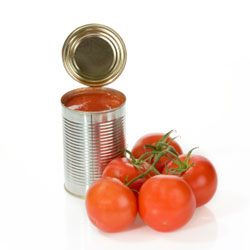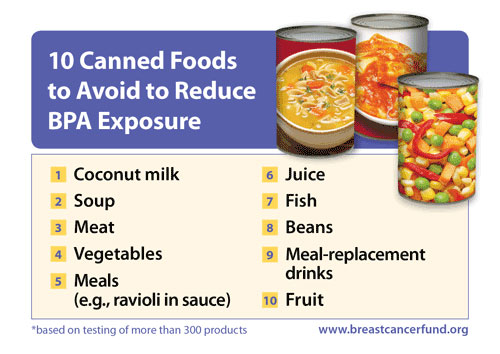By the team at Breast Cancer Fund
 We know BPA is all around us, and the Centers for Disease Control tells us the chemical is in almost 95 percent of us. And we know that laboratory studies have linked BPA to breast cancer, along with a whole host of other serious health problems. But what is the leading source of the BPA that contaminates our bodies? If we removed that source, how much would our BPA levels drop?
We know BPA is all around us, and the Centers for Disease Control tells us the chemical is in almost 95 percent of us. And we know that laboratory studies have linked BPA to breast cancer, along with a whole host of other serious health problems. But what is the leading source of the BPA that contaminates our bodies? If we removed that source, how much would our BPA levels drop?
The Breast Cancer Fund and Silent Spring Institute conducted a study, published today in Environmental Health Perspectives, to find out. We enlisted five families for a week-long investigation. First, the families ate their normal diets. Then, we provided them with three days’ worth of freshly prepared organic meals that avoided contact with BPA-containing food packaging, such as canned food and polycarbonate plastic. Finally, the families returned to their normal diets. We measured their BPA levels at each stage.
While the families were eating the fresh-food diet, their BPA levels dropped on average by 60 percent. Those with the highest exposure levels saw even greater reductions: 75 percent.
These groundbreaking results tell us that removing BPA from food packaging will eliminate our number one source of BPA exposure.
Here’s a summary of the kinds of changes we made to the family’s diets and how you can replicate them in your own kitchen:
- Switch to stainless steel and glass food storage and beverage containers.
- Move foods to ceramic or glass food containers for microwaving.
- Consider a French press for coffee – home coffee makers may have polycarbonate-based water tanks and phthalate-based tubing.
- Eat out less, especially at restaurants that do not use fresh ingredients.
- Limit canned food consumption. Download our 10 Canned Foods to Avoid wallet card for your next shopping trip. And share it with people you care about.
- Choose fresh fruits and vegetables when possible, and frozen if not.
- Soak dried beans for cooking (you can make extra and freeze them).
While we can take steps to reduce our BPA exposure, we need big-picture solutions to ensure that everyone is protected from this chemical. That’s why we’re telling industry and government that we want safe, non-toxic food packaging now. We’re urging our elected officials to pass laws that will eliminate harmful chemicals from food packaging. We’re demanding reform of the broken system that allows these chemicals to be in our food packaging in the first place. Thanks for lending your voice to this critical work.




